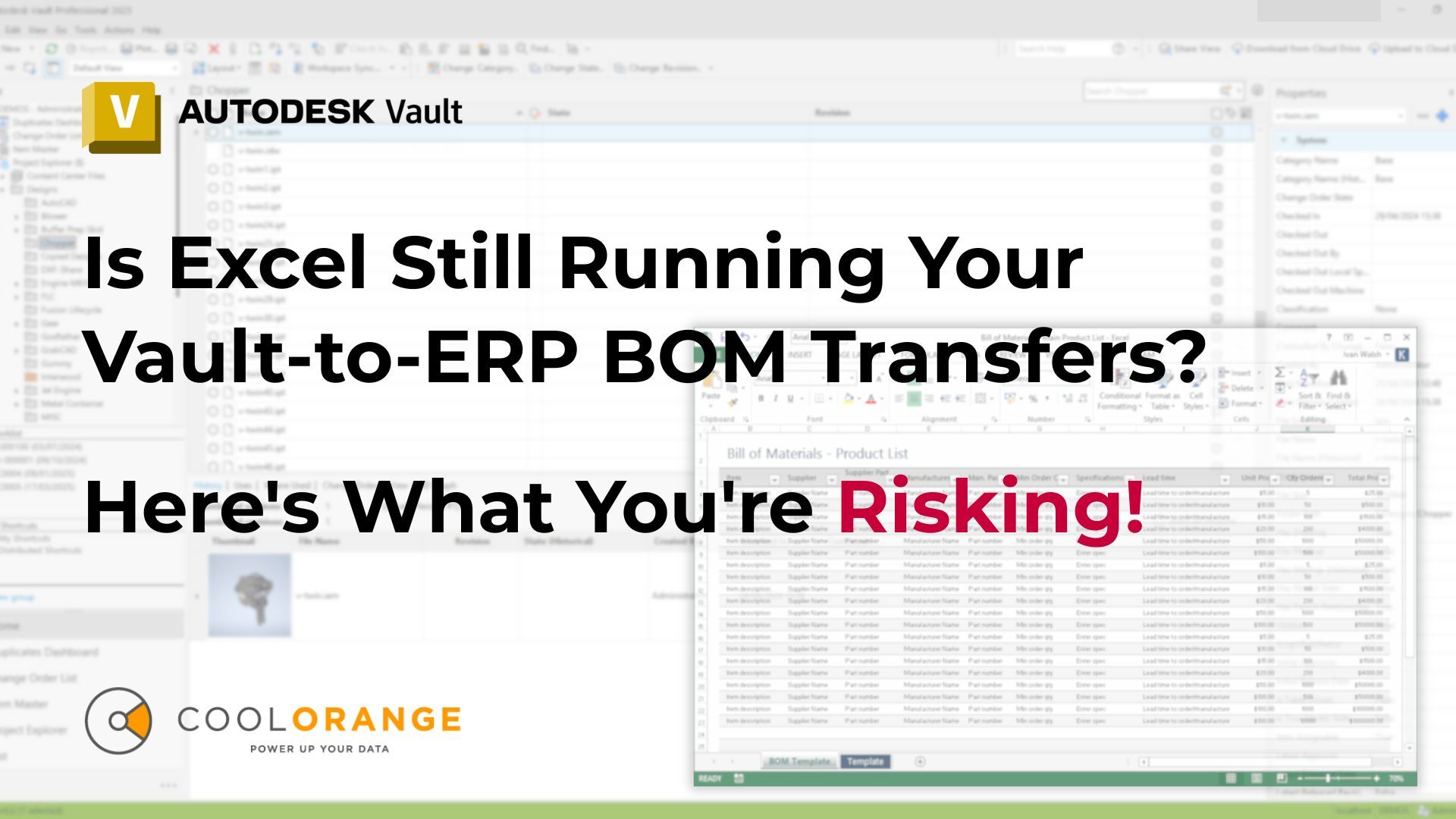News
The ROI Lie And The True Value of Getting It Right
ROI is one of those comforting numbers that make every investment sound logical.
In manufacturing and engineering software, it’s almost always measured in time: how long a task takes now versus how long it will take after automation.
Multiply the time saved by the hourly cost and the number of users, and you get a tidy ROI figure.
.jpg?width=724&height=483&name=coolorange-manufacturing-roi-lie(1).jpg)
Except, most of the time, that number is fiction, and it doesn't reflect the real added value that defines true manufacturing software ROI.
The Myth of the 10 Minutes Saved
The classic calculation says: if each user saves 10 minutes a day, and you have 50 users, you save hundreds of hours per month.
It looks great in a spreadsheet, but it’s not real life.
No one goes home earlier.
No one uses those 10 minutes to design the next innovation.
They simply disappear into emails, distractions, or the natural noise of an eight-hour day.
Micro-efficiencies look impressive on paper but rarely change the outcome.
In the context of manufacturing software ROI, this is where many companies miscalculate. Small time savings don’t always translate into measurable business value.
When Time ROI Is Real
Sometimes, the time savings are so large that they reshape the work itself.
We’ve seen this across several small manufacturing companies using Vault and Inventor, where tasks like transferring BOMs to ERP or publishing design files (PDFs, DXFs, STEPs) or printing drawings were handled manually.
Creating and sharing that data correctly, in the right location, with the right name, and up to date, could take a day or more.
With automation and integration, these same processes now take minutes.
The result isn’t just speed; it’s accuracy, completeness, and a smoother flow of information between engineering and production.
For this category of customers, the ROI is transformational: faster order processing, consistent documentation, better purchasing and production planning, and fewer misunderstandings downstream.
Here, automation and integration don’t just make things faster; they make them work.
This is where manufacturing software ROI becomes tangible. It turns manual processes into digital assets that deliver measurable efficiency.
When Time ROI Is True but Not Relevant
There’s another group of customers whose BOMs or file publications and printing are smaller, involving just a few components or designs. Creating them manually doesn’t take long, but it happens several times a day across dozens of designers.
On paper, the time ROI looks impressive.
In practice, it isn’t. Those saved minutes don’t transform anyone’s day; they simply get absorbed into the noise.
Yet, automation and integration still matter, not for speed but for quality and reliability.
With each designer and each additional manual BOM or export file, the risk of errors multiplies: typos in part numbers, missing drawings, outdated revisions, wrong file names or folders, or outdated PDFs or STEPs overwriting the wrong version.
Even if time savings are small, the compounding quality and consistency benefits contribute significantly to long-term manufacturing ROI.
The Quality ROI: Where the Real Money Is
Quality ROI cannot be measured with a simple stopwatch. It arises from understanding the entire process: where an error starts, when it’s discovered, and how far it spreads.
-
A wrong part or outdated drawing leads to producing or ordering the wrong component, wasting both material and time.
-
A wrong quantity means overproduction or stockouts, which leads to either waste or delay.
-
A missing or misplaced PDF, DXF, or STEP file means production or a supplier works with incorrect information.
The later the mistake is noticed, the higher the cost. By the time it’s found on the shop floor, the cost is obvious: material scrap, lost machine hours, missed delivery dates, or contractual penalties.
It doesn’t matter whether it’s a high-value product in small lots or a low-cost part in large volumes. The financial impact is tangible.
On the shop floor, data quality errors directly translate into lost money. The time spent fixing them is only the consequence.
In our interviews with hundreds of companies, conducted live at events and through follow-ups, over 95% confirmed that they had at least once pushed or published incorrect data into their ERP or file management systems.
Over 80% of those said the impact was huge, and the rest said it was high.
Effectively, every company has paid the price of poor data at least once, and all of them agree: "Ensuring quality is the holy grail."
That’s why Quality ROI should be at the center of any manufacturing software ROI discussion.
Time ROI Is Arithmetic. Quality ROI Is Diagnostic.
Time ROI is easy to calculate: count minutes and multiply by headcount.
Quality ROI requires diagnosing how your process behaves when something goes wrong.
Only when you trace the path of an error, from publishing a wrong file to producing a wrong part, do you see the real payoff of getting it right.
This diagnostic approach helps identify hidden ROI opportunities in manufacturing workflows. These are the opportunities that traditional ROI formulas often miss.
The ROI Nobody Dares to Promise
There’s also a third type: derivative ROI.
When you automate one process, you often unlock the next.
At first, teams focus narrowly on solving their immediate pain, such as getting BOMs and files transferred correctly, reliably, and without errors. They don’t want to overpromise or justify investments based on what others might gain later.
But months later, everything changes.
The automation becomes “normal.”
No one remembers the manual steps anymore.
Suddenly, new possibilities appear: automated purchasing, data analytics, collaboration workflows, and digital continuity across departments.
That’s when the quiet, derivative ROI reveals itself, the one that wasn’t promised but becomes obvious.
In manufacturing software, this derivative ROI is often the most powerful. It unlocks continuous improvement, innovation, and cross-departmental growth.
The Real ROI Formula
If you want to measure ROI honestly, stop counting minutes.
The true return looks like this:
ROI = (Transformational Time Saving) + (Error and Risk Reduction) + (New Possibilities)
Or, more simply:
Speed + Quality + Potential
Examples include less reworking and waste, fewer escalations and contractual penalties, more stable delivery dates, higher customer loyalty, and thus measurable, recurring value.
There’s also a natural sequence to it:
-
Time ROI looks backward, optimizing what you already do.
-
Quality ROI anchors you in the present, making today’s results trustworthy.
-
Enablement ROI looks forward, creating what wasn’t possible before.
That’s the kind of ROI that truly changes companies. It’s not just about how fast people work, but about how accurately they work and how far they can go next.
That’s the essence of manufacturing software ROI: measurable efficiency, reliable quality, and scalable potential.
Curious where your real ROI lies?
If you’d like to understand where your processes currently lose value, whether it’s time, quality, or potential, and discuss with one of our experts how to turn that into measurable outcomes, get in touch with us.
Sometimes the biggest ROI starts with simply seeing where value is already slipping away.
Discover your true manufacturing software ROI today and transform your engineering and production performance.




.jpg)
